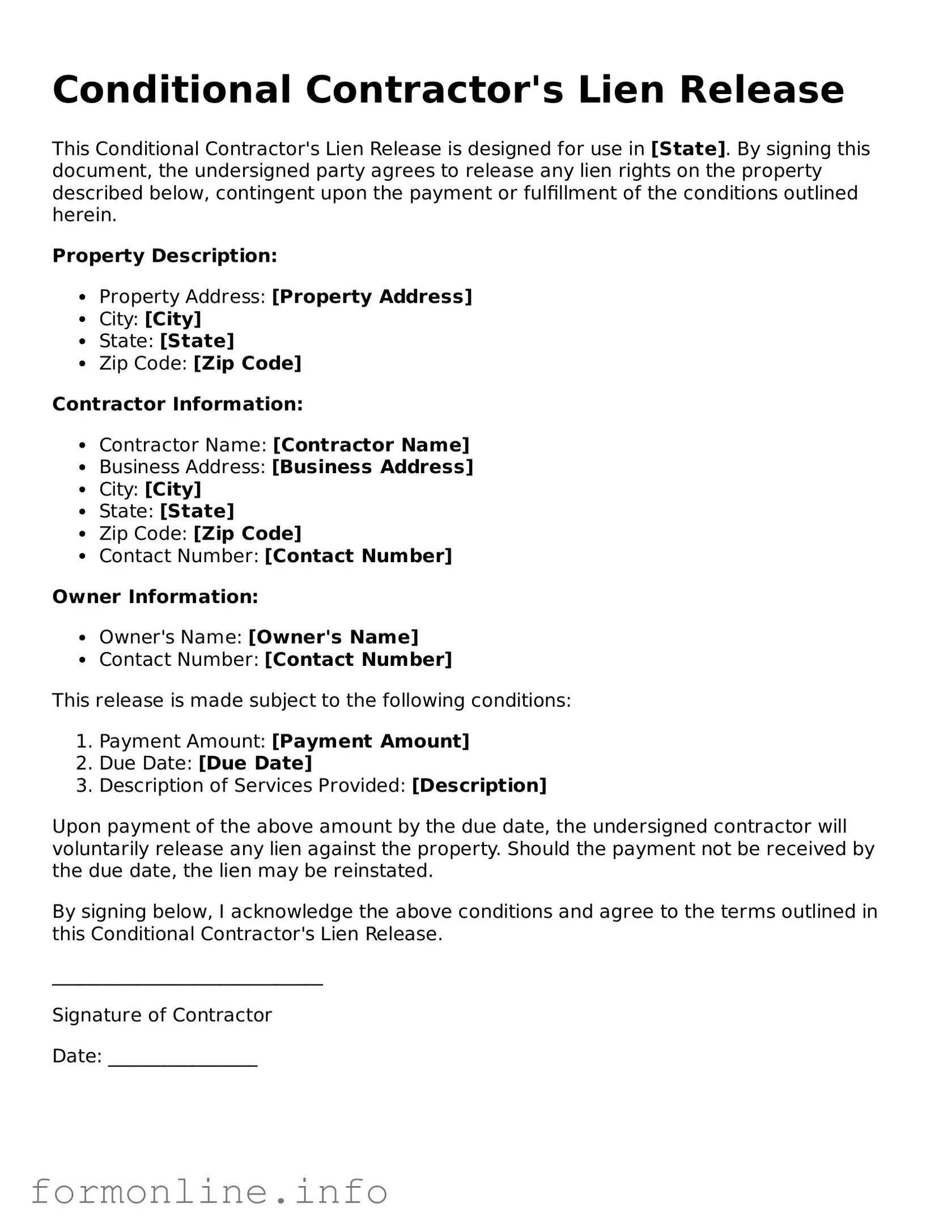Conditional Contractor's Lien Release
This Conditional Contractor's Lien Release is designed for use in [State]. By signing this document, the undersigned party agrees to release any lien rights on the property described below, contingent upon the payment or fulfillment of the conditions outlined herein.
Property Description:
- Property Address: [Property Address]
- City: [City]
- State: [State]
- Zip Code: [Zip Code]
Contractor Information:
- Contractor Name: [Contractor Name]
- Business Address: [Business Address]
- City: [City]
- State: [State]
- Zip Code: [Zip Code]
- Contact Number: [Contact Number]
Owner Information:
- Owner's Name: [Owner's Name]
- Contact Number: [Contact Number]
This release is made subject to the following conditions:
- Payment Amount: [Payment Amount]
- Due Date: [Due Date]
- Description of Services Provided: [Description]
Upon payment of the above amount by the due date, the undersigned contractor will voluntarily release any lien against the property. Should the payment not be received by the due date, the lien may be reinstated.
By signing below, I acknowledge the above conditions and agree to the terms outlined in this Conditional Contractor's Lien Release.
_____________________________
Signature of Contractor
Date: ________________
